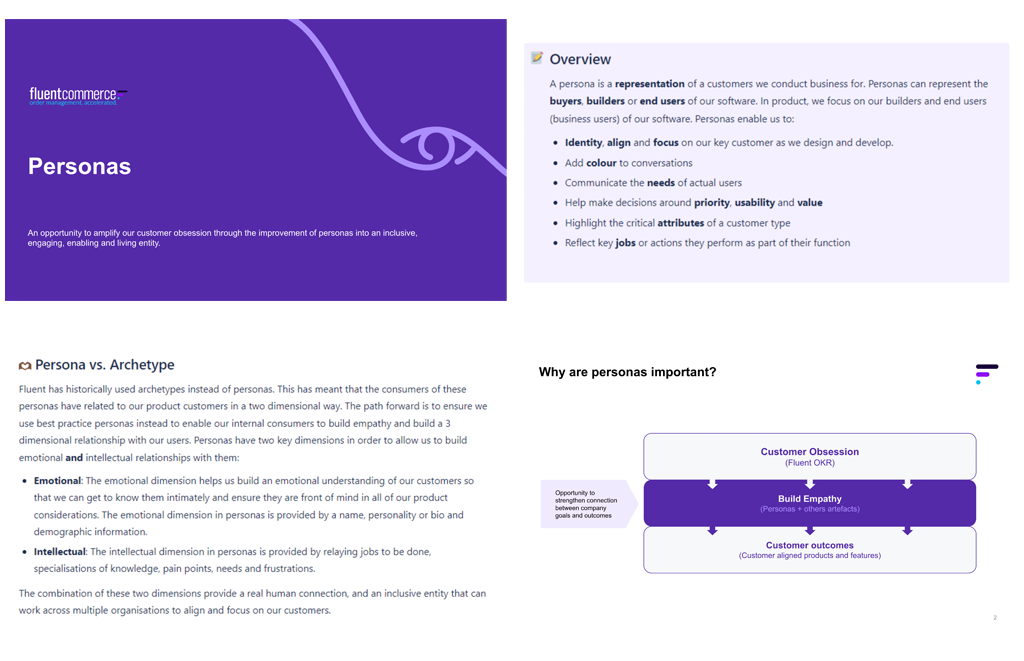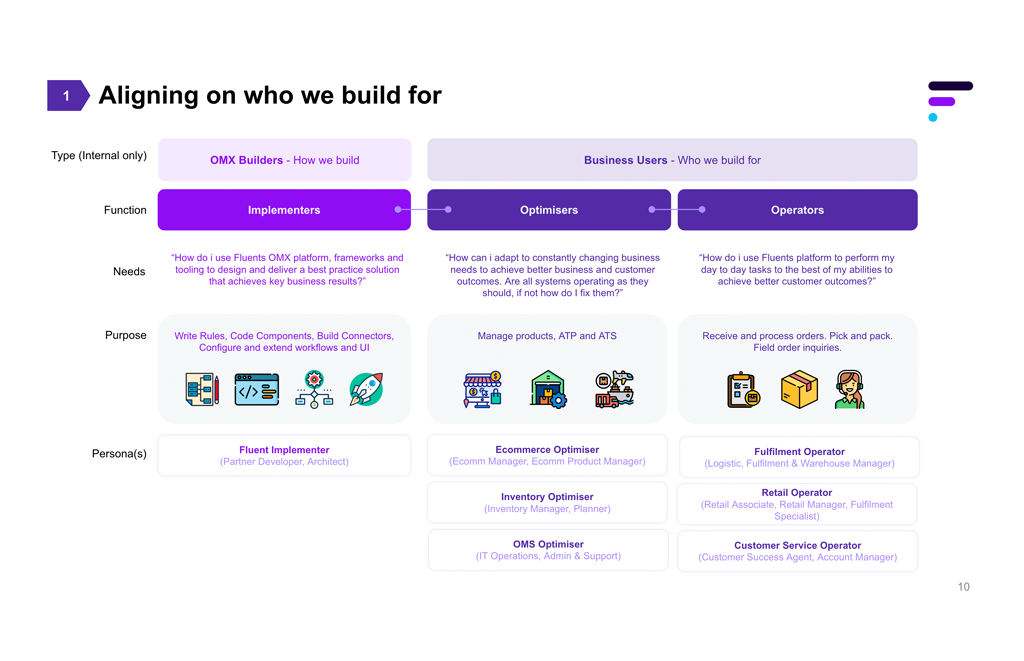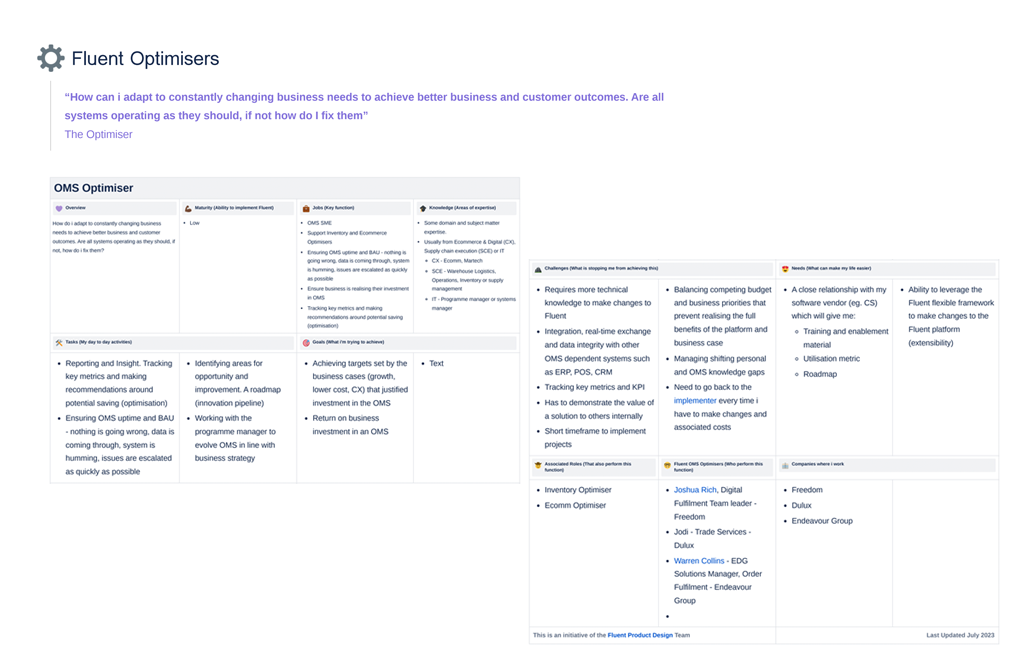Understanding Customers (Personas)
After developing a first cut of the Design Thinking playbook and practice vision, it was time to address the core of our existence as designers and key elements in establishing Design Thinking at Fluent Commerce. It was time to talk about our customers and their personas.
Following the same design thinking framework of divergence and convergence I first needed to understand what work or thought had been put into this already, the adoption of this work company-wide and the state of understanding about personas, how they are used and their effectiveness. During this research phase, I came to understand the PM team had ‘smashed out’ close to 25 personas in half a day. While this work was a good reference in the final output, the existing personas were too complex, too many, and unvalidated and were therefore not being referenced as part of the product development process. Here lies the difference between someone creating artefacts because it is good practice vs. a designer or Design Thinker who fundamentally believes in its use and value in creating better experiences. I started to document the journey from this state. These slides are referenced below.
Business Objective
One of Fluent’s company OKRs was customer obsession. Personas are fundamental to ensure what we build aligns with company goals and business strategy. Establishing a concise, aligned, verified and realistic set of personas was crucial to guide both product and business teams to build for and support our users (business users and implementers) better.
Customer Problem
Fluent Commerce, as the customer of this work did not have an aligned single view of their customers, their needs, behaviours, responsibilities and journey on Fluent. If we didn’t know who we were designing for we didn’t know what and how to design it. This was particularly important when working with product and engineering teams.
Design Challenge
Understanding the customer landscape, and aligning with multiple stakeholders on our primary and secondary customers. Create a framework for understanding and addressing our customers.
Create a common language for use within the business. Bring these personas and their names into every piece of work. Bring our customers to life in our work.
Achievements
Created a framework to align our two user groups, implementers (Systems integrators) and business users (end users of our interfaces)
Received agreement between key stakeholders and departments on our customers and users
Consolidated and evolved our previous personas using the customer framework into a workable, simpler, and easier-to-use set of personas
Identified actual companies and customers who fit these personas as targets for solution and usability testing
Brought these personas into every project to ensure their needs were met
Used these personas to target research and solution validation throughout the Product Development Framework
Created a common language for addressing our customers





Credits
Product Name: Personas (Fluent Commerce)
Role: Head of Product Design
Website Link: https://fluentcommerce.com/